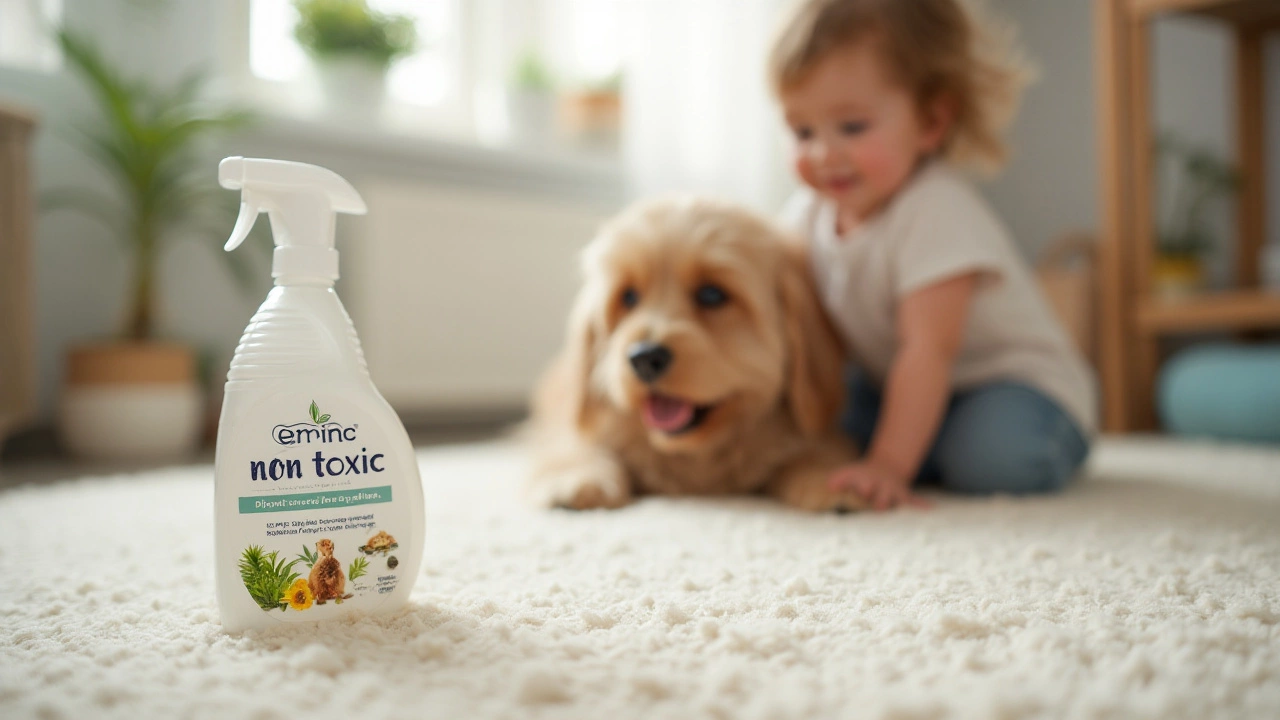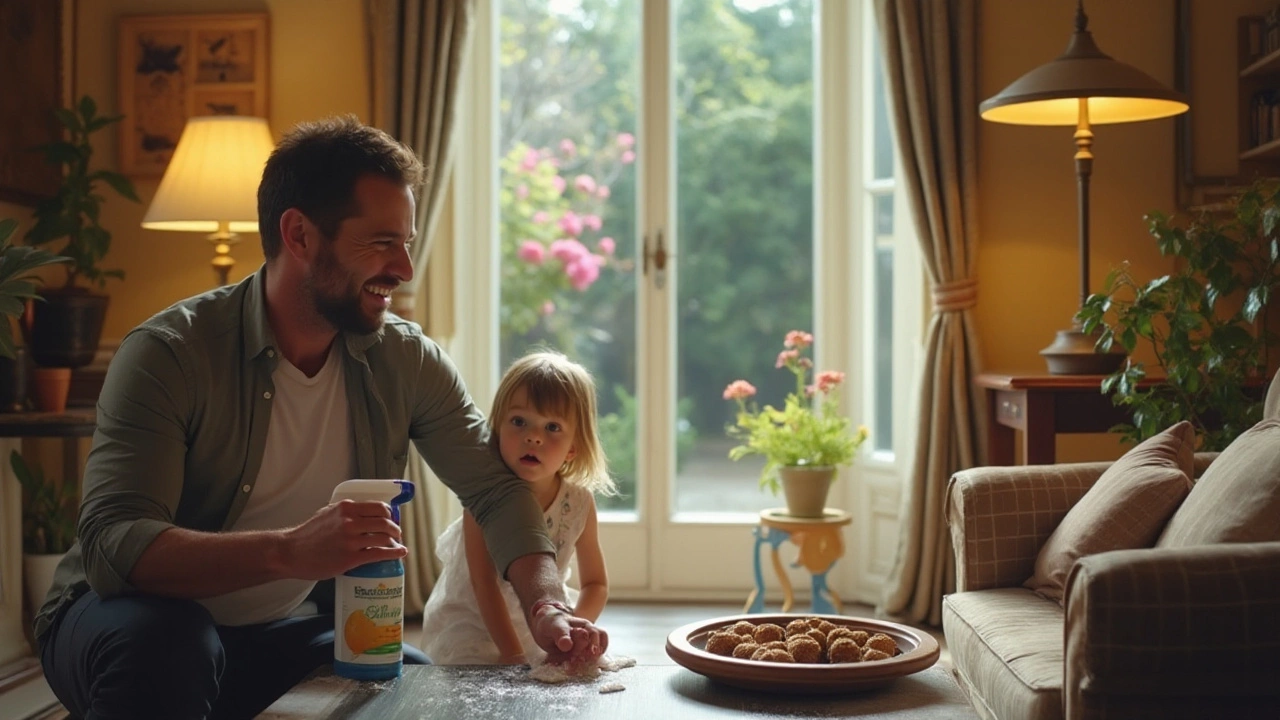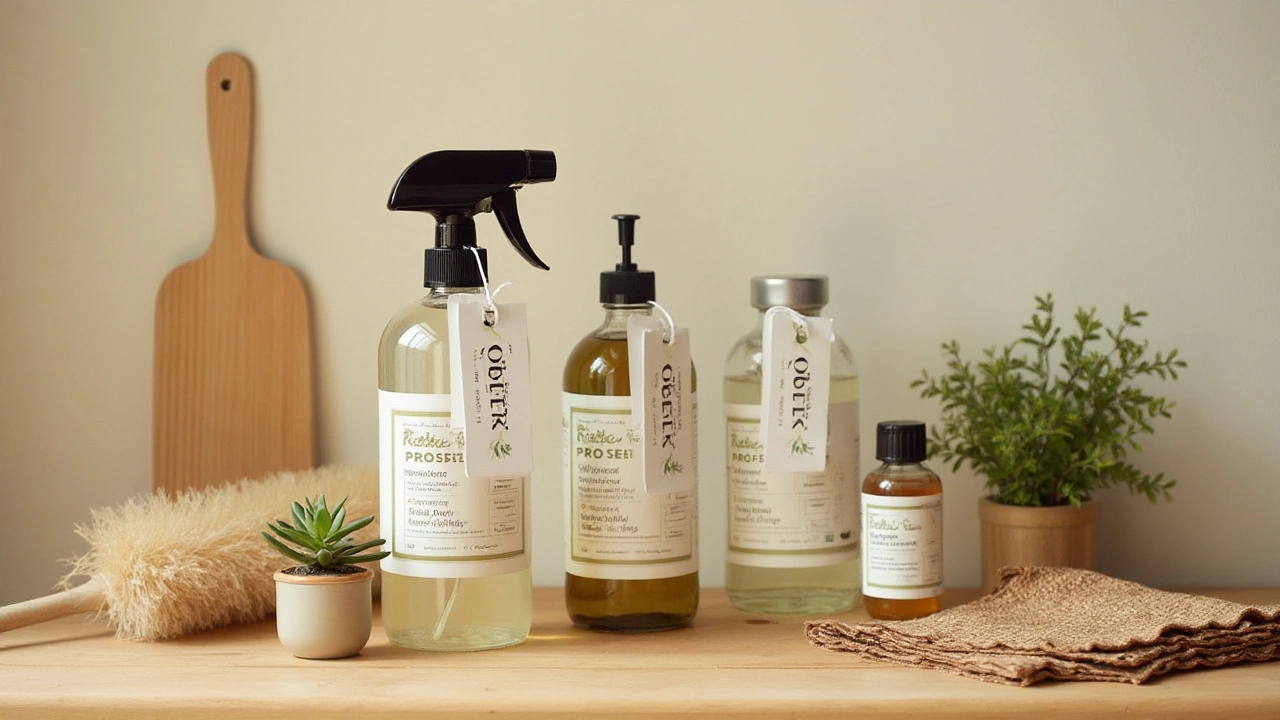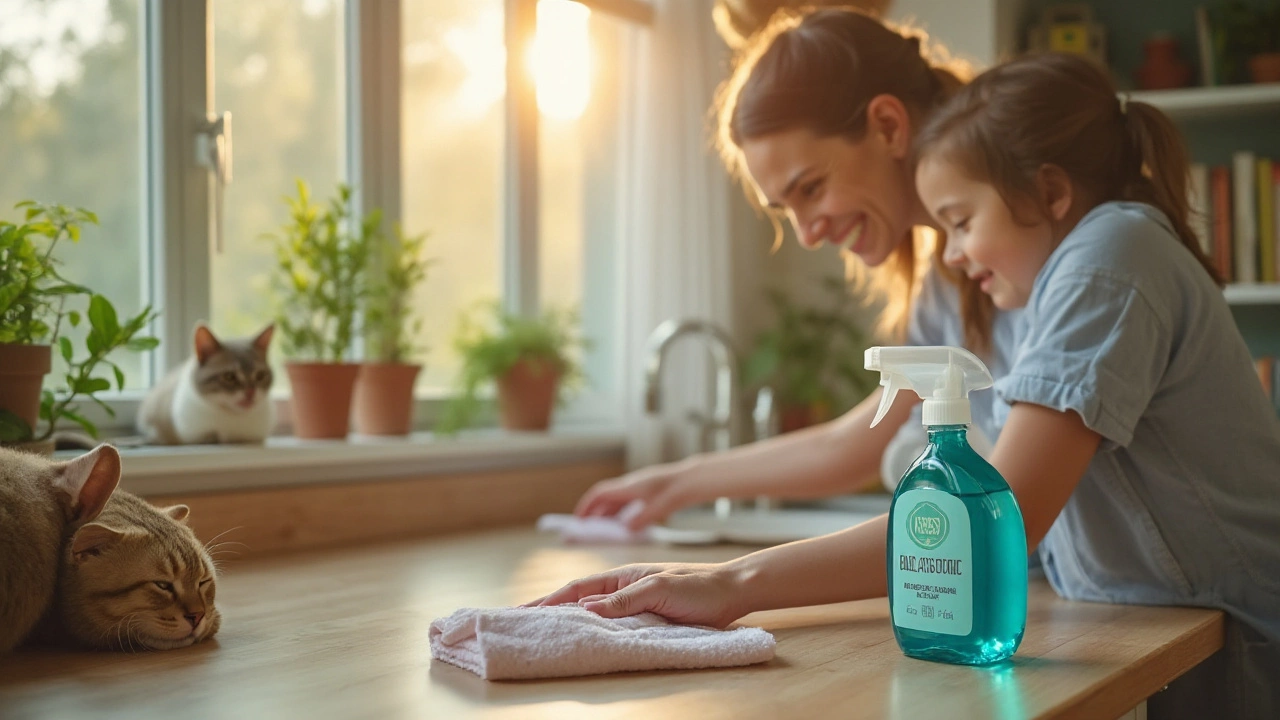In recent years, non-toxic cleaners have gained popularity as an alternative to traditional cleaning solutions. People are increasingly looking for ways to maintain a sparkling home without the harsh chemicals that can pose risks to health and the environment. As more households consider making the switch, a common query persists: do these green cleaning products genuinely deliver the results they promise?
Settle in, as we take a closer look at the world of non-toxic cleaning. We’ll explore the components that make these cleaners special, their effectiveness compared to conventional cleaners, and the positive impact they have on our planet and personal well-being. Whether it’s tackling stubborn grease in the kitchen or making bathroom tiles shine, there’s more than meets the eye when it comes to these eco-friendly wonders.
- Understanding Non-Toxic Cleaners
- How Effective Are Non-Toxic Cleaners?
- Benefits of Using Non-Toxic Products
- Tips for Eco-Friendly Cleaning
Understanding Non-Toxic Cleaners
The move toward eco-friendly cleaning has piqued the curiosity of many, prompting them to explore what's behind the label of these so-called non-toxic cleaners. At its core, the appeal of these products lies in their commitment to leaving out the harsh synthetic chemicals that are often found in conventional cleaning supplies. Common household cleaners typically include ingredients like ammonia, bleach, and formaldehyde, which can contribute to indoor air pollution and pose significant health risks over time. On the contrary, non-toxic alternatives harness the power of naturally-derived components.
Many non-toxic cleaners rely on ingredients known for their cleaning prowess and environmental safety. For instance, white vinegar and baking soda are stellar at dissolving grime and neutralizing odors. Essential oils, such as tea tree or lavender, are often included for their antibacterial properties and pleasant aromas. Such ingredients have been utilized for generations, long before the advent of modern chemical concoctions. Their natural origin doesn't compromise efficacy; rather, they offer a way to clean while minimizing harm to the planet.
To get a sense of the impact, consider this: according to a survey conducted by the Environmental Working Group, approximately 53% of products tested contained ingredients harmful to human health. That's more than half of the cleaners on your average supermarket shelf. On the other hand, green cleaning products focused on non-toxic components significantly reduce exposure to potential irritants.
"Not only are these green products safer for human health, but they also drastically diminish the ecological footprint of cleaning by minimizing waste and pollution," said a spokesperson from a leading environmental research institution.
But what truly sets non-toxic cleaners apart is their versatility. These products are often infused with multifunctional ingredients, allowing them to tackle various cleaning tasks with a single formula. Whether it is wiping down counters, mopping floors, or cleaning glass surfaces, their adaptability is a major sell. In many homes, eco-friendly cleaning is also synonymous with a thoughtful and conscientious approach to consumerism. By prioritizing biodegradable or recyclable packaging, manufacturers align with the values of environmentally-minded consumers.
As folks become more conscious of what they bring into their homes, transparency in product labeling has become crucial. This means non-toxic brands often pride themselves on clearly stating their ingredients, ensuring consumers are informed every step of the way. This level of openness builds trust and empowers families to make choices that align with their commitment to health and sustainability. In today's marketplace, the conversation is quickly shifting from "Do these products work?" to "How can we incorporate more non-toxic solutions into our lives?"

How Effective Are Non-Toxic Cleaners?
Non-toxic cleaners are positioned as safe and planet-friendly alternatives to traditional cleaning agents, which often contain harsh chemicals. But when it comes to actual performance, do these products only offer peace of mind, or do they stand toe to toe with their chemical counterparts? First, it's essential to understand what's in these cleaners. Many non-toxic products leverage naturally derived ingredients such as baking soda, vinegar, and essential oils like tea tree or eucalyptus. These compounds have been used for centuries, not only as cleaning agents but in various home remedies due to their antimicrobial properties.
Interestingly, scientific research backs up the efficacy of several of these ingredients. A study published in the 'Journal of Environmental Health' highlighted that vinegar and hydrogen peroxide, both common components of non-toxic cleaners, were successful in eliminating specific bacteria and mold types under laboratory conditions. Such findings instill confidence in families keen on maintaining hygiene without jeopardizing health. In the practical world of household chores, such validation becomes crucial.
Of course, skeptics might argue that personal anecdotes and small studies might not be sufficient. Nonetheless, many families who switch to greener solutions report satisfaction with the cleanliness achieved. They often note that while non-toxic options might require a bit more elbow grease in certain situations, the results are commendable. Homeowners frequently point to the prolonged freshness brought by the natural scents of essential oils, which conventional products can sometimes mask with artificial fragrances. This enduring freshness is particularly favored in spaces like kitchens and bathrooms.
"Eco-friendly cleaning products can be just as effective as traditional cleaners, as long as you choose products that have tested ingredients like citric acid or enzymatic action," shares Dr. Laura Cavendish, a well-regarded environmental scientist.
There is no denying all cleaners, whether eco-friendly or chemical-based, have their pros and cons. The strength of a non-toxic cleaner often lies in its regular usage and application. Rather than saving cleaning chores for a massive weekly overhaul, consistent maintenance can leave homes not only healthier but cleaner. This consistent cleaning can tackle mild to moderate messes effectively and help cultivate a cleaning routine that is sustainable over time.
Comparing Traditional and Non-Toxic Cleaners
For those still on the fence, comparisons between traditional and non-toxic options offer valuable insights. Traditional cleaners, containing agents like bleach or ammonia, are engineered for quick action and are particularly effective for deep grime or industrial use. However, they can also release VOCs (volatile organic compounds) which might be harmful with prolonged exposure inside enclosed spaces.
- Non-toxic cleaners, in contrast, aim for a balance — decent power without the downsides of conventional chemicals.
- Research suggests homes using non-toxic cleaners seem to maintain better indoor air quality compared to those reliant on chemical-laden products, reducing risks of respiratory irritation or allergies.
- Using these cleaners also promotes a safer environment for pets and young children, who are especially sensitive to the residues left behind by chemical cleaners.
In households where various members contribute to cleaning duties, non-toxic products eliminate the worry around exposure to abrasive substances. With people moving towards more conscious living, many prefer knowing each swipe or scrub not only enhances cleanliness but doesn't adversely impact their loved ones or the planet. This silent assurance makes non-toxic cleaners a viable and often preferred choice for many.

Benefits of Using Non-Toxic Products
When it comes to maintaining a spotless home, using non-toxic cleaners can transform not just your cleaning routine but also enhance the health of those residing within your abode. These products carry several perks that are hard to ignore, especially for individuals concerned about the presence of harsh chemicals. A delightful benefit is their gentle touch on the environment, fundamentally contributing to a greener planet. By opting for these eco-friendly cleaning solutions, we decrease the release of chemical pollutants into the air and water, promoting a healthier ecosystem for every living being.
Another compelling advantage of non-toxic cleaners arises from the enhanced safety they offer within our homes. In households bustling with young children or furry friends like my dog Charlie, minimizing exposure to toxic substances becomes a primary concern. Traditional cleaners can often leave harmful residues on surfaces, putting young ones at risk. Non-toxic options significantly lower that risk and promise a safer home environment.
“Green cleaning products are not only better for the planet, but they're also better for your indoor air quality, reducing the potential for allergic reactions,” says Dr. Tina Wismer, a leading expert in environmental health.
In terms of financial peace, non-toxic products can be surprisingly cost-effective. Despite the common misconception that quality equates to a higher price tag, many of these environmentally gentle products are priced competitively. Coupled with multi-surface functionality, even a single product can often take the place of several traditional cleaners. This multifunctional capacity reduces clutter and can lead to substantial savings over time.
Moreover, the usage of non-toxic products can enhance indoor air quality significantly, a benefit that extends well beyond mere cleanliness. Traditional cleaning supplies can often release volatile organic compounds (VOCs) into the air, which may linger for hours after use. These compounds can trigger respiratory issues and allergies. In contrast, the constituents of non-toxic solutions are carefully selected to ensure they do not compromise the quality of indoor air. Full of pleasant and natural aromas, they provide a home environment that's both fresh and safe.
One might also ponder about the effectiveness of these green cleaning allies. Many non-toxic products have been developed to match—and sometimes even surpass—the cleaning power of traditional ones. With advances in technology and formulations, they can effectively tackle grease, grime, and bacteria. Here lies the charm of these innovative cleaning champions: you achieve a clean home without compromising on safety or contributing harm to the environment.
A quick glance at a survey conducted in 2023 highlights that 75% of individuals notice no difference in cleaning efficacy when switching to a non-toxic solution, positively reinforcing their faith in these products. This metric underscores the growing trust and dependence on safer cleaning alternatives and only strengthens the case to embrace non-toxic cleaning methods.

Tips for Eco-Friendly Cleaning
Embracing eco-friendly cleaning practices can substantially minimize your environmental footprint while ensuring your home remains hygienic and safe for your family. First and foremost, consider the ingredients in your cleaning products. Non-toxic cleaners often incorporate natural components like vinegar, baking soda, and lemon juice, which are not only effective at removing dirt and grime but also gentle on the planet. These ingredients are biodegradable and versatile, allowing you to use them on various surfaces. Additionally, DIY cleaning solutions using these basic pantry staples can be far less expensive than commercial products.
Next, let’s talk about reusable cleaning supplies. Traditional paper towels and disposable wipes contribute to significant waste. Instead, invest in reusable cloths or microfiber towels, which can be washed and reused hundreds of times. These alternatives not only reduce waste but also offer superb cleaning power, especially for dusting and wiping down surfaces. Microfiber, in particular, is excellent at trapping dust and microbes, making your cleaning efforts more efficient and thorough.
For those living with pets like my dog Charlie, safety is paramount. Many conventional cleaners contain harsh chemicals that can pose risks if ingested or simply through skin contact. By choosing eco-friendly cleaning products, you minimize potential harm to your pets. Additionally, it's essential to store cleaning supplies safely out of pets' reach, even if they are labeled as non-toxic. Being proactive about pet safety extends to making sure floors, where pets might spend considerable time lounging, are free of harmful residues.
Creating Your Own Cleaners
For those interested in creating their own non-toxic cleaning solutions, the process is simpler than you might expect. Start with a basic all-purpose cleaner made from one part water, one part vinegar, and a few drops of your favorite essential oil for fragrance. This classic combination can tackle a variety of messes throughout your home.
As Dr. Anne-Marie Helmenstine notes, “Vinegar is a wonderful cleaning agent. It kills bacteria and can dissolve mineral deposits.”Be sure to label any homemade cleaners and store them in a safe place.
Finally, consider the amount of water you use while cleaning. Using excessive water not only wastes a precious resource but can also damage certain surfaces over time. For example, when mopping floors or wiping down countertops, aim for a damp (not soaked) cloth or mop. This method reduces the risk of water damage and is also more effective at picking up and trapping dirt particles. Reducing water consumption aligns perfectly with the principles of green cleaning, highlighting the interconnectedness of environmental responsibility in every little action we take.
To put things into perspective, consider integrating eco-friendly practices as a journey of thoughtful choices. Whether through selecting the right products, embracing reusable options, making your own cleaners, or simply conserving resources, each decision contributes to a healthier home and a healthier planet. These small, conscious steps create a big difference, ultimately enhancing the well-being of our environment and the quality of our everyday lives.
